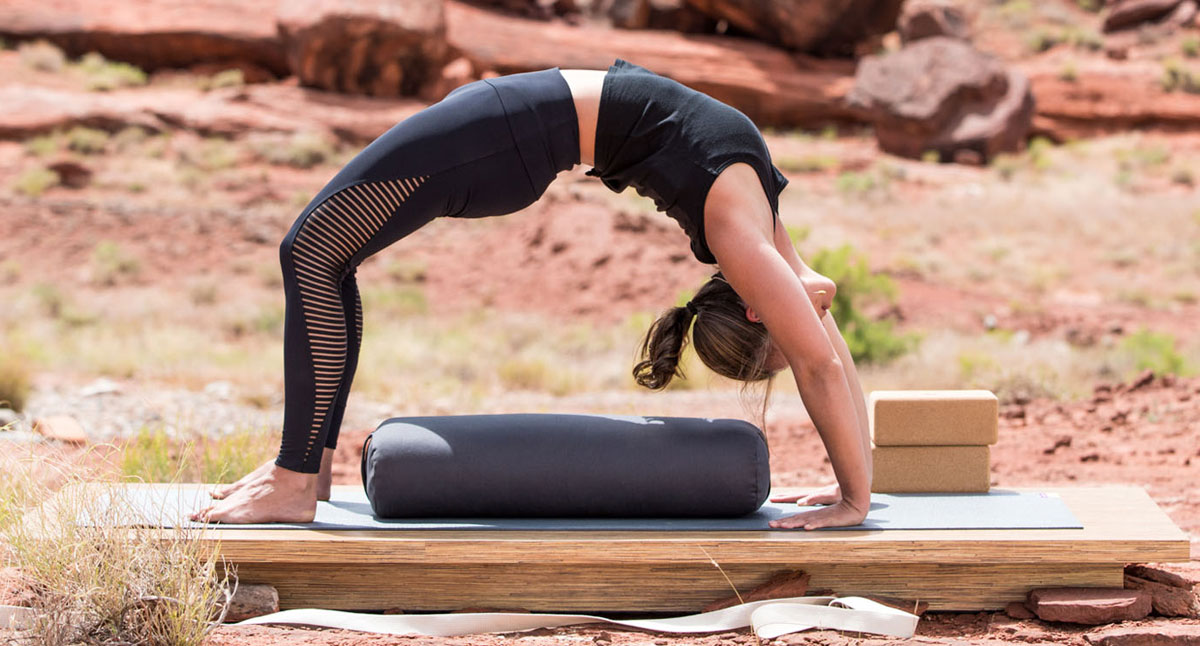
Yoga teachers often describe yoga poses in terms of their heating and cooling qualities. Heating yoga includes standing poses, backbends and core work. Cooling yoga involves poses such as twists, forward bends and restorative yoga. Many of us sequence our yoga practice and our classes with these qualities in mind. For example, I like to start a practice with heating poses, and move gradually to cooling poses, ending with a generous Savasana (Relaxation Pose).
As we move into summer, I orient my classes toward the cooling side of the spectrum. As a person who’s prone to overheating, I’m well aware of the downsides of adding more heat to an already over-cooked body. But I don’t want to deprive my students or myself of the strengthening qualities of heating poses. So in order to continue to offer a well-rounded practice, I still include some poses that are on the heating side of the scale.
So how can we balance the need to stay cool with the desire to engage in a well-rounded practice? When I studied at the Ramamani Iyengar Memorial Yoga Institute in Pune in 1989, the late Geeta Iyengar proposed a solution. In the last days of a three-week intensive, as we were preparing for the grueling 20-hour flight back to the States, Geeta offered a markedly more gentle approach to practice than she had in the previous weeks. While we spent much of our practice time in calming restorative poses in those final days, we still practiced standing poses in every session. The standing poses we practiced did not have to create excess heat, she said—if we practiced them with a “cooling intention.”
In an indirect way, Geeta was talking about an aspect of karma. Karma includes both intention and action. This means that our actions bear consequences—pleasant or unpleasant—depending on the action itself, but also on the intention behind it. Intention colors the results of our actions. For example, if we practice asana with an aggressive or competitive attitude, we are likely to feel more heated or agitated after our practice. If we practice with an attitude of curiosity and openness, we can practice any pose, even heating poses, and emerge from practice with a sense of calm and ease.
How to Practice Cooling Yoga
Here are two key ways I’ve learned to manifest a cooling attitude while practicing asana:
- Be aware of your breathing: The way we breathe influences the state of the nervous system. Restricted or agitated breathing in any pose can cause a sympathetic (fight-or-flight) response, including heat and agitation. Slow, deep breathing yields a cooling, calming parasympathetic (rest-and-digest) response. If your poses are restricting your breathing, relax your effort.
- Redefine your edge: Most of us think of our edge as that place where we can go no further in a yoga pose. But the truth is, the edge is not just one small endpoint. We can interpret our edge in many different ways. For example, the interpretation that works best for me is what I call the “compassionate” edge or the “intelligent” edge. This edge is the point where you feel a moderate stretch, but your breathing is slow, deep and steady. When you practice at your intelligent edge, you can relax into the pose you’re in, rather than attempting to push your body into new territory that it might not be ready for. Practicing at the compassionate edge yields calm, contentment and ease. At your compassionate edge, we partner with the body instead of trying to conquer it.
- Stay inside your body: Even though most of us know that yoga is not supposed to be competitive, we all tend to compare ourselves to others, and to our past or imagined future practice. We tend to approach yoga as if it were a sport, focusing on what we think poses should look like. Turning awareness inward, to the internal moment-to-moment sense experiences in each unfolding asana can help us dampen tendency to practice aggressively.
Try these suggestions and then take time in between poses to feel the aftereffects. This will help you develop an inner reference system to guide you toward a practice that both energizes and cools you.
